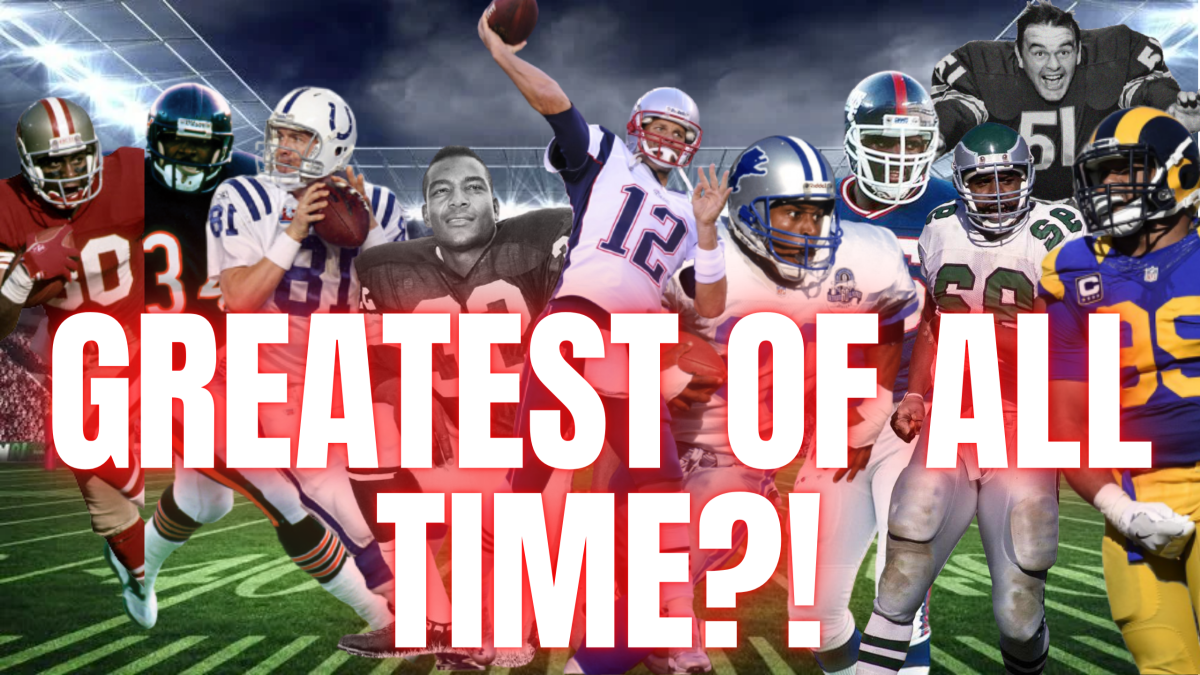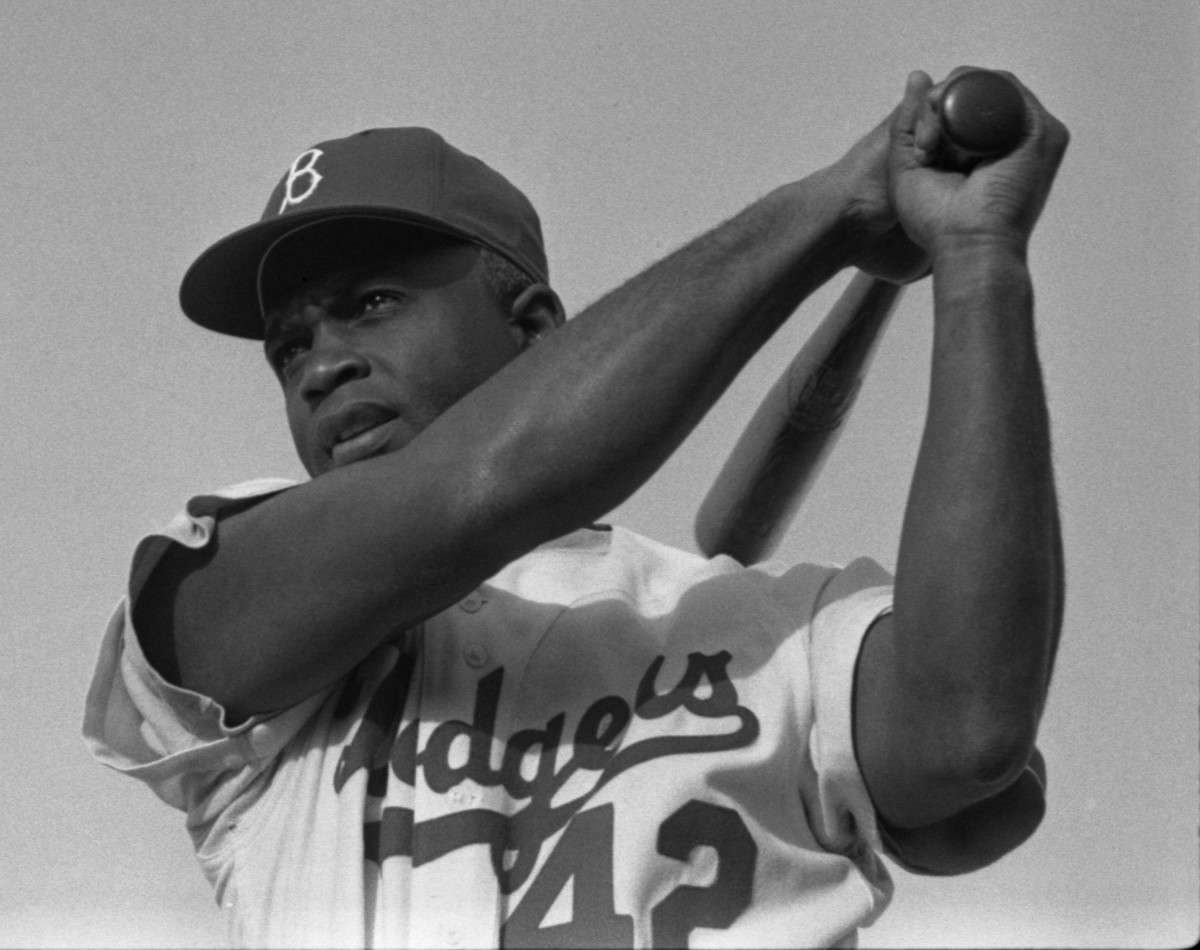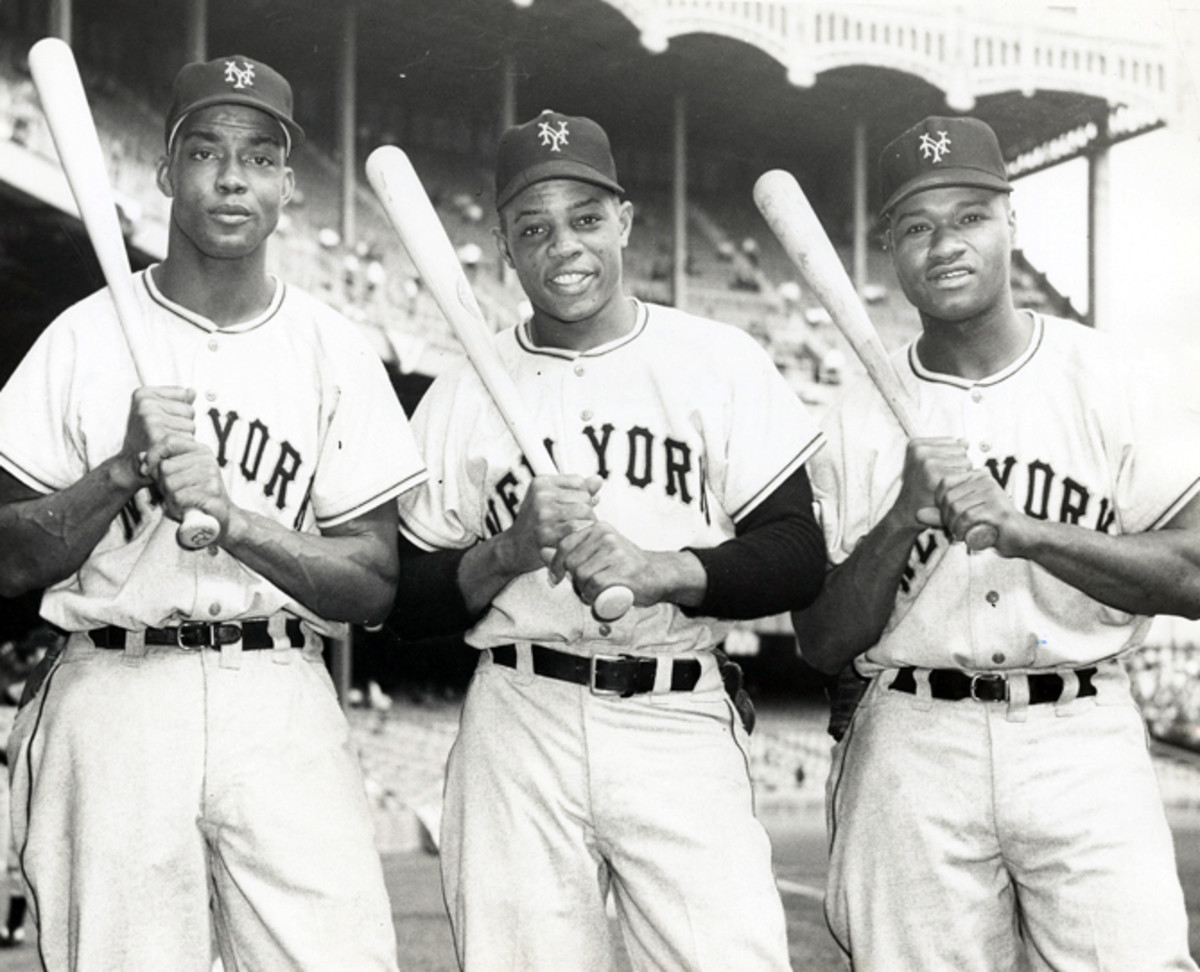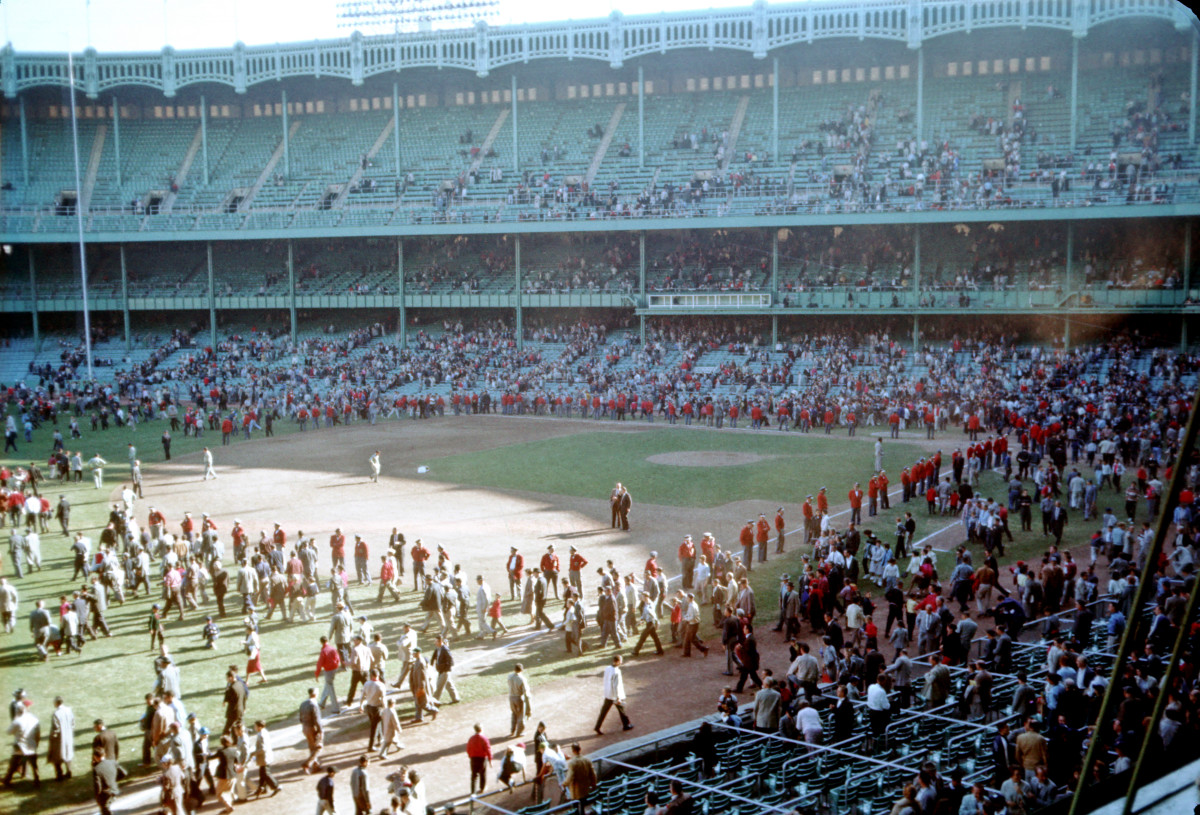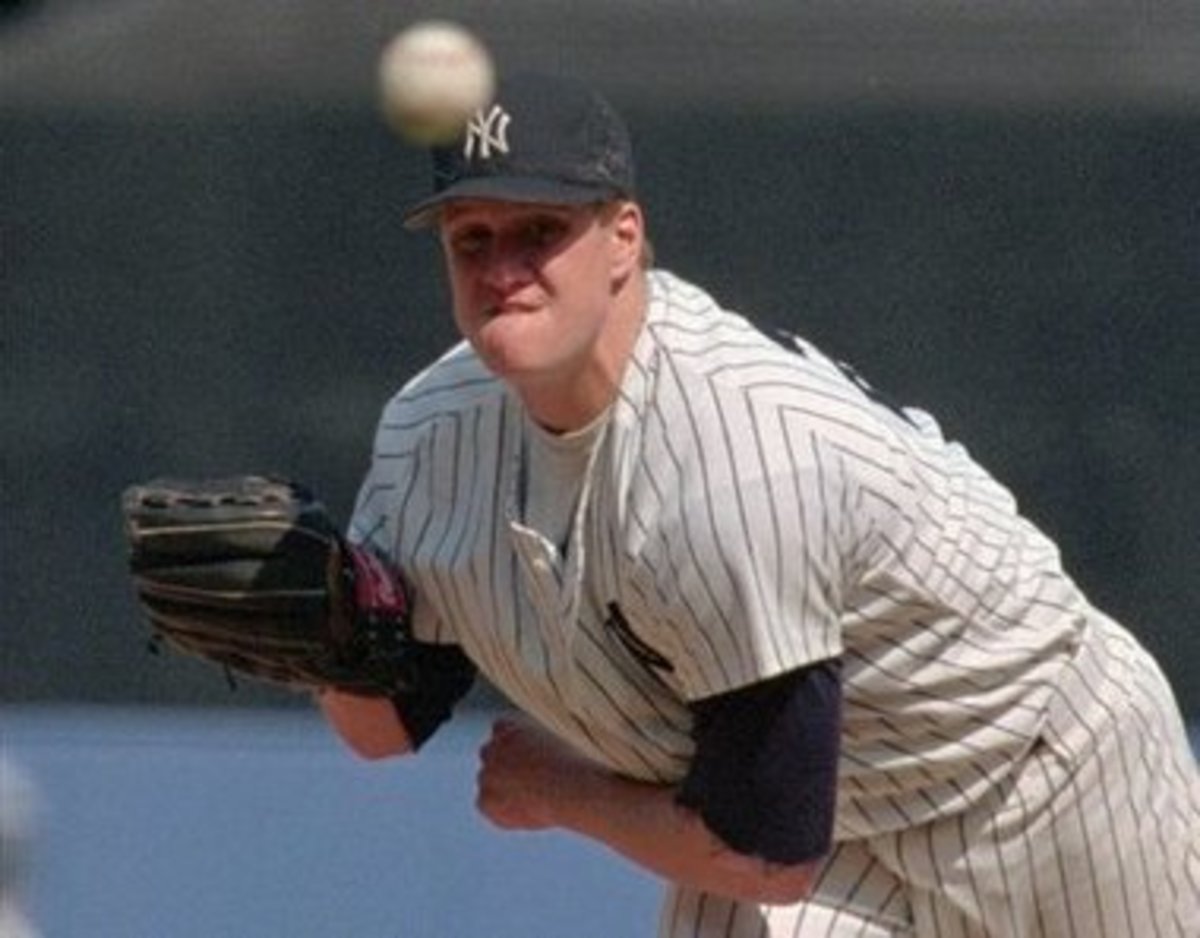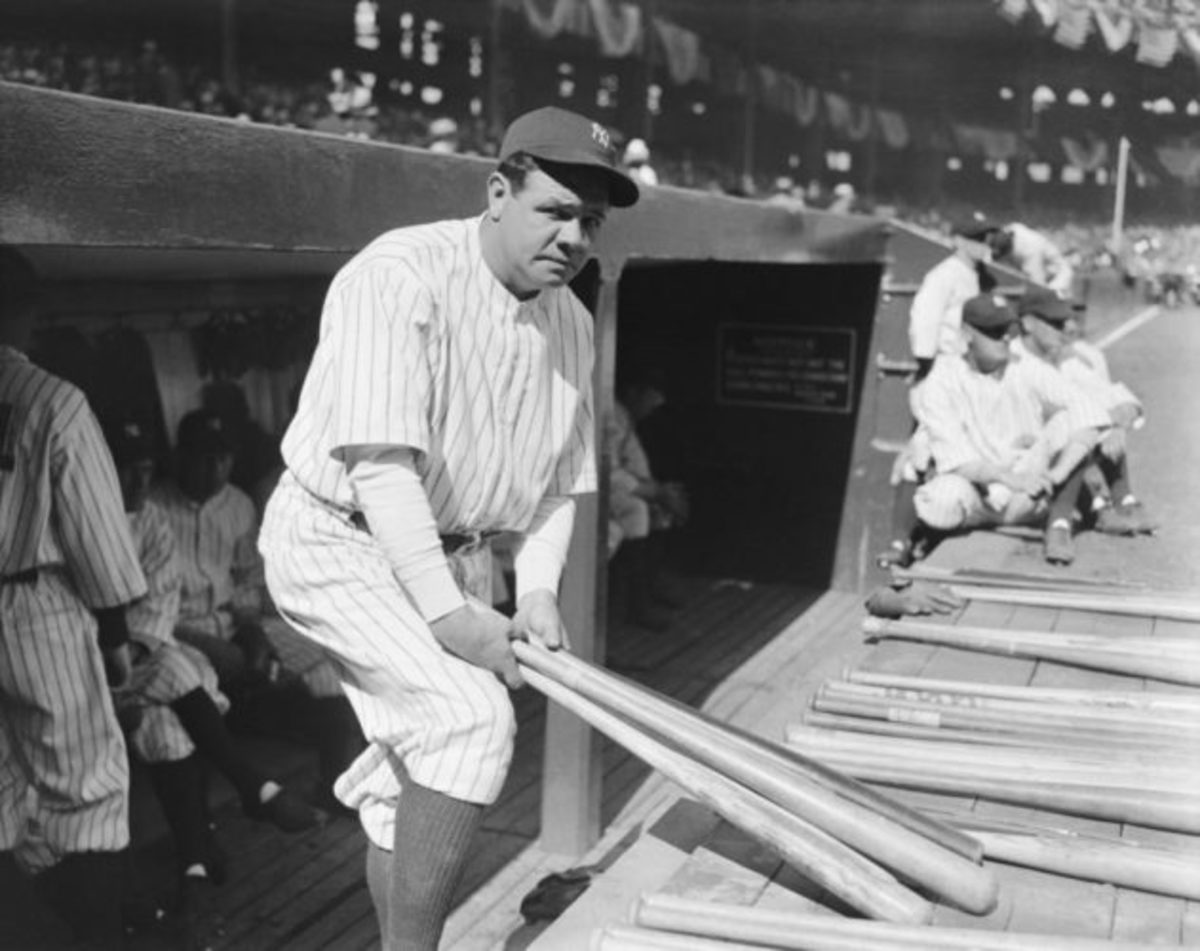- HubPages»
- Sports and Recreation»
- Team Sports»
- Baseball
The St. Louis Cardinals: A Look Back At Who Made Them What They Are Today
A Brief History...
Beginning in 1881, St Louis set their feet on the road to the present by creating the St. Louis Browns. A founding member of the American Association, which was created to be a rival of the National League, they quickly became a dominant team under the guidance of manager Charles Comiskey. Recognize that name? Yes, it is one and the same as the Charles Comiskey as in the Chicago White Sox Comiskey; the Black Sox Scandal Comiskey; and Comiskey Stadium Comiskey.
Comiskey led the team to four consecutive pennants, including a series in which they played none other than the Chicago Cubs prototype White Stockings twice. One ended in a tie, the other the St Louis team won. And that, children, is why the Cubs hate the Cardinals to this day!
But all good things come to an end and after ten years of dominance in which they had a record of 780 wins against 432 losses the league went belly up and they were forced to enter the National League in 1892. This league wasn't quite so good to them and they finished last or next to last 16 times over a 28 year span. Ouch.
Not all was bad during this time when they were known as the Perfectos. Their uniforms had the Cardinal Red trim and sock striping which was remarked upon by a female fan as being a nice shade of cardinal. A sportswriter of the time, Willie McHale, overheard the comment and published an account of this in the St Louis Republic newspaper. The fans liked the new moniker Cardinals and the rest, as they say, is history.

Enter Branch Rickey
In 1919 Branch Rickey joined the team as team president and manager. Recognize that name? Branch Rickey as in signing Jackie Robinson Branch Rickey? Yeah, that's him. In 1920 Rickey was bought out as majority holder for the team and stayed on as the on the field manager. In 1925 he was fired as this and offered a position equal to today's General Manager position. He was not exactly happy about it at the time. So, what did he do? Just went out and expanded the scouting department, created player development, and pioneered this thing called a Minor League System. No big deal.
Oh, and he did one more thing: he developed the Cardinals logo birds on a bat in 1922. Seems he was speaking at a church in nearby Ferguson, Missouri (recognize THAT name?) when he saw a cardboard arrangement in the church with two cardinals perched upon a branch. The arrangement had been created by Allie Mae Schmidt whose father was a graphic designer. And thus was the Birds on a Bat design created; the one loved by fans and hated by enemies the league through.
After being fired as the on field manager, he was kept on to run the front office as a developer of players. He then went out and invested in several minor league teams which he used to supply the big league club. In case that sounds simple in today's parlance know this: in those days, players were sold to whatever big league team wanted them; there were no Single A, Double A or Triple A affiliates around. What he did was groundbreaking: the players who played on his minor league teams went only to the Cardinals. He would seek out and buy player contracts from other minor league teams and bring them home to his teams, thus creating the modern Minor League System as we know it. The first graduate of this school to achieve notoriety was Pepper Martin when in 1931 as a rookie was the star of the World Series winners. That team became known as the Gashouse Gang, won over 100 games and eventually featured "Dizzy" Dean, "Ducky" Medwick and "Daffy" Dean, Dizzy's brother.
Other players to come through Rickey's minor leagues were Enos Slaughter and Stan "The Man" Musial, who is often considered to be the face of the franchise.
One more thing: did you know he championed the development and use of an "electric umpire"? Yep, long before today's instant informational age where one can routinely see whether the pitch was high, low, inside or outside Rickey assisted in the development of a teaching tool that could give instant feedback to players on whether a pitch was a ball or a strike. This was a step up from his strings arrangement of knowing if a pitch was a strike or not. Reportedly, this was primarily developed for Duke Snider, to help him with his love of high fastballs, and to teach his eye to see what was and what was not a high strike.
I think Branch would have greatly enjoyed today's baseball with all its bells and whistles and gadgets designed to promote greater information with which to provide a more intelligent decision making process, don't you?
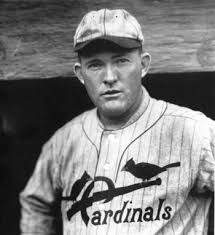
Rogers Hornsby
So now we know a little about how the Cardinals began and a couple of the influential people that assisted in that creation. It's time to get to know a few of the players which made them what they are today; who helped create "The Cardinal Way". Let's begin with one of the all time greats, Rogers Hornsby.
Hornsby had a career batting average of .358 which is second only to Ty Cobb. Named MVP twice, had seven batting titles, and was the only player to win two Triple Crowns in his career. Who was the other? Ted Williams, and Hornsby batted over .400 both times he won. His eye was so good that when a rookie pitcher threw what he thought was a strike to Hornsby and complained that is was called a ball to umpire Bill Klem, Klem let him know that "when you throw a strike, Mr. Hornsby will let you know" indicating that he would hit it.
He also accomplished the unique Decade Triple Crown in which he led the league in total average, home runs and RBI's over the course of a ten year period of the 1920's. Only Ted Williams, Honus Wagner and Albert Pujols are the others to accomplish this feat (notice there are two Cardinals on this list!). He was the first National League player to hit 300 home runs and his record of 264 home runs as a second baseman stood until Joe Morgan topped him in 1984.
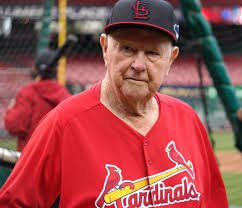
Red Schoendienst
Anther player who came up through the ranks of the minors was Alfred Fred "Red" Schoendienst. Ol' number 2 has been in a uniform for over 70 years now, with the vast majority of that being a Cardinal uniform.
Red grew up in nearby Germantown, Illinois to a poor family led by a coal mining father. While still in school he would "handicap" himself by batting left handed playing in schoolyard games. While working for one of Roosevelt's good ideas, the CCC he injured his left eye. Doctors wanted to remove it but he persisted and eventually found a doctor willing to try a different tack. For years, he endured treatments and had horrible headaches which left him unable to read breaking balls while batting right handed; so he fell back into his left handed hitting ways from his youth and the rest, as they say, is history. After a tryout for the Cardinals, in which he was not signed, the head scout Joe Mathes changed his mind and drove back to Germantown and signed Red to a $75 per month contract.
Joining the team in 1945 Red, who was a shortstop, was moved to left field as the current Cardinal shortstop, Marty Marion had been MVP of the league in 1944. As a rookie he hit well, batting .278 and led the league in stolen bases with 26. Moved to second base the following year he was part of the World Series team that year, then in the off season won the Home Run Derby which was a televised event. His sure hands at the base allowed him to have 320 straight opportunities without an error in 1950. On a personal note, with Jose Oquendo out for the year, maybe Red could work with our current infield crop to minimize the error we seem to be having right now.
Eventually Father Time catches up with all of us, and Red was no different. His playing days dwindled and after the Cardinal World Series victory in 1964 Red took over the reins as manager. A short three years later Red won his fourth World Series as a player and manager and would eventually be a part of another as a coach in 1982.
Today finds Red still active in the organization and more often than not can be found at the home games. He is always a part of the Opening Ceremonies each year and has taken on the mantle of Greatest Living Cardinal after Stan Musial's passing.
1960's
The 1960's were some good times for the Cardinals. Lou Brock came to town in a trade with the Cubs (hee hee!). Brock went on to have a Hall of Fame career with the Cardinals, playing left field while stealing enough bases to break Ty Cobbs record.
Born to sharecroppers and telling people "If you don't have something, you don't miss it." as a means to explain having never felt poor, Brock didn't even play baseball until he was in the 11th grade. He learned a lot about the sport while listening to Harry Caray describe the way a batter stood at the plate. Yes, Harry Caray was a Cardinal broadcaster before he became the Cubs standby.
While at Southern University, an NAIA school Brock traveled to St Louis to try out for the Cardinals, unfortunately the scout who recommended he come there was not in attendance so he went to the Cubs tryout. He spent only a single year in the Minors before being brought up to the big leagues. As a rookie he hit a home run into the center field bleachers at the Polo Grounds and became only the fourth such player to do this in the forty years of the stadium's existence. He had power to go along with his speed, and he used this for his entire career.
But still, the Cubs lost interest after he faltered a bit and he was traded to the Cardinals in what was seen a a lopsided trade, the Cubs receiving Ernie Broglio who had led the league in wins tied with Warren Spahn (Spahn and Sain and pray for rain!). The Cubs thought they had gotten the better of the deal but somewhere, someone knew something others didn't know.
You see, the Cardinal organization knew Broglio's arm was going, and fast. In 1961 he had 20 cortisone shots just to pitch. Sorry Cubs Fans! After the trade, Broglio went 3 and 12 and was sent down to the minors, never to return. All Brock did was go on to have a Hall of Fame career. This has been ranked as the all time worst trade in baseball history.
Just another reason for the Cubs to hate the Cardinals. Need another? How about when he became the 14th player in Major League history to record 3,000 hits. Can you guess who he did this against? How many guesses do you need? Yep, dem Cubbies!!
And while Carl Yastrzemski reached the same plateau a month later and was invited to the White House by Tip O'Neill, Brock was slighted and did not receive such an offer until later.
Brock was also an innovator, being one of, if not the first, players to use film as a means to improve. He would take home movies on 8mm film of opposing pitchers and study the film to see tendencies, thus improving his chances of stealing a base or two.
Bob Gibson
How many times have you heard about Bob Gibson and pitching inside? Bob Gibson and his incredible 1.12 ERA of 1968? That stand as the lowest mark in modern baseball history, only eclipsed by Dutch Leonard's mark of 0.96 in 1914. As a result of Gibson's dominance, they lowered the pitching mound after that.
But did you also know he was a tremendous athlete in other sports? He was offered a $3,000 bonus to sign with the Cardinals in 1957 but he put it off in order to play for the Harlem Globetrotters basketball team where he became known as "Bullet" and was famous for his backhanded dunks.
One of the funniest (to me) quotes I have ever heard about Gibson was from a player named Jim Ray Hart. Hart played with Willie Mays and between games at a double header Mays told him they would be going against Gibson in the second game. Hart didn't understand what Mays said and during his first at bat, dug in the box. He could hear Mays crying out "NO-O-O-O-O-O!" when the first pitch came and it was inside. Undaunted, he dug in again and the next sound he heard was a loud "CRACK!" when the ball hit his shoulder. And then his shoulder was broken. He goes on to say he should have listened to Willie.
1970's and Beyond
Joe Torre came to town as a catcher slash third baseman. He became the only man to ever record 2,000 hits as a player and 2,000 wins as a manager. He was once manager of the Cardinals, replacing Whitey Herzog he of the Whiteball days of glory when they won the 1982 Series and appeared in two others, 1985 and 1987. Herzog would also be remembered for the trade that shook up Cardinal-nation when he sent Garry Templeton, who was said to make errors on balls other shortstops couldn't even get to and was the first switch hitter to collect 100 hits from each side of the plate, for Ozzie Smith. The Wizard of Oz went on to a Hall of Fame career shortstop and is widely regarded as perhaps the best to ever play the position.
I have to say this about Ozzie: his desire to play may be almost unparalleled. As a young boy, his family was so poor he didn't even have a glove. So how did he play and practice? He would take a brown paper bag, put it onto his hand and shape it into the semblance of a glove and play ball. He would play catch, throw a ball against a wall and use that bag as his glove. This is what he credits his soft hands with.
The early 2000's brought us Chris Carpenter, Adam Wainwright and Yadier Molina, who just might go down in history as the best defensive catcher of all time. It also brought us one Albert Pujols who might go down as perhaps the greatest offensive first baseman in history and was the very first player to ever hit at least .300, 30 home runs, 100 runs scored and 100 RBI's in his first two seasons. To date he has accomplished the amazing feat of 12 straight years of 30+ home runs, 10 straight of 100+ RBI's (broken at that when he only hit 99 the 11th year), 7 straight of 100+ runs scored (followed by 99 then another 4 of 100+), and 10 straight years of a .300 batting average before he came back to earth with a .299 average. So, for the record he was the first man to ever hit .300, 30 home runs, 100 each runs and RBI's for the first two years...then did it for the next 8 with a break of 99 runs scored in 2007 before he hit the skids at year 11 when he only hit .299 with 37 home runs, 99 RBI's and 105 runs scored. Poor guy.
But to me, the one who has carried the torch of hard work and excellence is Yadi, he of the Fabulous Catching Brothers Molina. The things he does during a game border on the unbelievable. Like last night, in his 13th year in the league with a man on first and one out, the batter swings and bounces a ball in the dirt in front of the plate. To most catchers, that ball hits a second time and goes foul but Yadi pounces on it like a lion on a gazelle, tosses his helmet off and grabs the ball at shoulder height in one smooth motion, fires a strike to second for the force and the ball is then thrown to first for a 2-6-3 double play. I was speechless. The announcers were stunned. It was one of the most incredible plays I have ever seen made, and it was just one more day at the office for Yadi. He walked off the field as if this was nothing which for him, is to be expected. He is the consummate professional at his position.
Today's team carries on the traditions of hard work, of doing things a certain manner which has become known as "The Cardinal Way". Play hard, stay clean and above board, maintain the persona of "we've been there before and we will again" which has led them to eleven World Series titles in their history. They are not usually the type to make big splashes in the sports news with multi-million dollar free agent signings as other teams do (although they did try this past off season) but prefer to fill from within, a promote from below type of atmosphere that works to keep the wheels turning and lets those who toil in the minor leagues know that hard work and perseverance can and will pay off for those who dedicate themselves to the team mentality they strive for. And one can see it happening again this year. Last year it was Tommy Pham, Randall Grichuk and Stephen Piscotty making waves in the big leagues; this year it has been Jeremy Hazelbaker and Aledmys Diaz leading the way. By the way, Cuban born Diaz qualified for the league leader board last night and now has enough at bats to become the leader in batting average. He is batting .468, is the first hitter in history to bat .500 or above through his first 50 at bats in the league, and has a higher OPS than Bryce Harper for the year (1.369 to 1.260) and he is out-slugging Harper going in to Monday's game and all he's done since then is go 5 for 12 with 5 runs scored, a home run, 2 RBI's and a walk.
The future's so bright, I gotta wear shades!
- http://www.circasports.com/posts/3157561-video-yadi-molina-reminds-us-he-s-still-got-magic-in-his-gl
At this point, Yadi Molina doesn't deserve a Gold Glove. He deserves a platinum one. The guy is, what, 80 years old and has won, what, 90 Gold Gloves?...
And so, this completes my little history lesson on the St Louis Cardinals. We've only scratched the surface of this wonderful team but I hope you enjoyed it and I encourage you to dig into your favorite team's history. Who knows what you might find?

